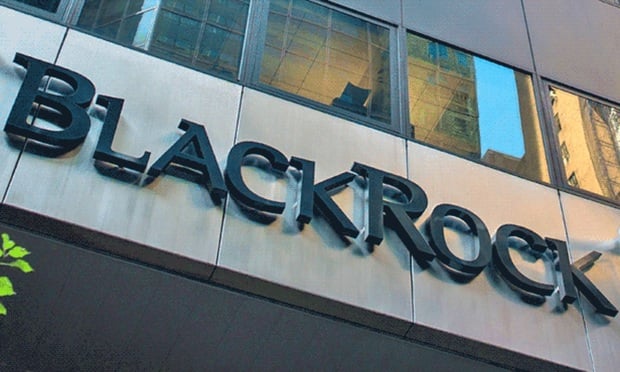The cost to invest in target-date funds fell again in 2016, a fact that analysts at Morningstar said should come as no surprise.
The average asset-weighted expense ratio for a TDF was 71 basis points, down marginally from 2015. But when considered in a longer context, price compression on the favored qualified default investment alternative (QDIA) in 401(k) plans is nothing short of remarkable. Just five years ago, the average TDF expense ratio was 100 basis points.
The continued trend is the result of a confluence of familiar factors that have been impacting the asset management industry. Competition in the TDF space is fierce, and all indications are that that will not change.
Recommended For You
The velocity of fee-related fiduciary claims brought against plan sponsors and plan providers is virtually too quick to keep up with, and has clearly made employers and plan advisors more cost conscious.
And investors are favoring less expensive passively managed mutual funds, a trend that has migrated to TDFs, and forced actively managed funds to lower their costs in the effort to stay viable.
Then there is the fiduciary rule, the wild card that is expected to further accelerate price compression, even if it does not survive as it is currently written.
Of the 58 TDF series analyzed by Morningstar in its 2017 Target Date Fund Landscape report, 35 funds cut their costs last year. The most aggressive move was in the BlackRock LifePath Smart Beta series, which slashed its expense ratio to 68 basis points from 101, a 33 percent decline. So far, the move has not corresponded to greater market share. In 2015, assets in the series accounted for 2 percent of the more than $880 billion invested in TDFs. The series' market share fell to 0.02 percent last year.
"Fees coming down is a good thing, but there is a danger in just considering fees," Jeff Holt, associate director of Morningstar Manager Research and one of the authors of this year's report, told BenefitsPro. "We've been proponents for low fees for a long time. That being said, TDFs are unique in a sense that you can't go purely passive—every manager is making some asset allocations decisions in creating the glide path."
Here are 10 facts pulled from Morningstar's report that give some shape to the dynamic TDF market as it pushes to the $1 trillion threshold.
1. On balance, providers not jamming funds with equity
How managers weight equity along glide paths has had a massive impact on fund performance during the long equity bull market.
Over the past seven years, a 1-percentage point increase in equity exposure resulted in a 6 basis point improvement in annual returns.
That reality begs the question as to whether fund mangers are tempted to build too much equity risk for older investors near retirement, as a way to juice performance and attract investors. But Morningstar's report shows that the average equity weighting for series that are near, at, or through retirement has not changed much. The average equity weighting for funds at retirement was about 42 percent last year, virtually unchanged from 2012.
The average equity weighting for funds 20 years from retirement saw the largest increase in equity exposure since 2012, with the average fund increasing its equity exposure by 3.3 percent for mid-career workers.
2. The Big 3 still dominate, and fight to hold on to market share
Vanguard, Fidelity, and T. Rowe Price, which together account for more than 70 percent of the market, dominate the TDF market.
That's been the case for some time, but last year Vanguard extended its lead. It now claims 31.8 percent of the market, with more than $275 billion in TDF assets. Back in 2007, just after passage of the Pension Protection Act, Vanguard claimed only about $30 billion in TDF assets.
3. Negative flows at top
Three of the ten largest providers saw negative flows last year: Fidelity lost $2.7 billion, Principal Funds lost nearly $497 million, and $239 million left John Hancock funds.
4. Biggest winners
Vanguard captured $37 billion in new flows, more than any firm by far.
American Funds, the fourth largest provider, attracted a healthy $15.8 billion in flows. T. Rowe Price saw $5.5 billion in new flows, and JP Morgan, the fifth largest provider, and TIAA, the sixth largest, saw substantial gains, with $4.6 billion and $4.1 billion respectively.
5. Biggest losers
In 2016, 16 firms lost market share. Wells Fargo took the biggest hit, dropping from 2 percent share in 2015 to 1.1 percent in 2016.
6. TDFs crucial to firms' overall performance
Morningstar's report shows just how critical the target date market is to investment firms' overall performance. For some firms, TDFs are the only source of growth.
Among the 10 largest TDF providers, TIAA and T. Rowe Price have about 30 percent of the their firms' overall assets in TDFs. More than half of TIAA's overall inflows came from investments in its target date series.
Nearly 41 percent of Great-West Funds overall assets are in TDFs, and 39 percent of the assets managed by State Farm are in TDFs.
KP Funds manages about $5.7 billion total assets, more 93 percent of which are in its target date series.
Vanguard and American Funds are the least reliant on target date business among the top five providers, as only 8.2 percent and 4.2 percent of assets are in TDFs, respectively.
7. DFA post largest organic growth rate
Widely respected Dimensional Fund Advisors had the best organic growth in the TDF market last year.
Assets increased from $19 million in 2015 to $324 million, or a 1,523 percent increase. DFA manages $316 billion in overall assets; its target date business is only 0.10 percent of its overall assets, but the Austin-based firm appears poised for future growth.
8. New entrants struggle to gain traction
In 2002, there were on six target date series. By 2007 there were 42. Over the past eight years, the number of total series has stayed between 50 and 60, with the number of firms offering funds staying around 40.
While growth in the number of funds over the past 15 years has been notable, "few asset-management firms have been able to participate meaningfully" in the funds' popularity, Morningstar says. Still, firms are persistently trying to crack the code—11 new series have been launched since 2014.
Another seven funds have terminated since 2014.
9. Firms offering multiple funds
Back in 2008, Voya (then ING) became the first manager to offer more than one series. Now 12 managers do. Fidelity has four series, with most assets in its Fidelity Freedom TDF.
For firms that offer more than one series, most have assets aggregated in one TDF. John Hancock and Voya are exceptions to that general rule—with each firm, two of their three series share a relatively even split of assets.
10. Will TDFs prove to be the answer for a secure retirement?
The first TDF was launched 25 years ago. Most of today's offerings emerged a decade ago, after the Pension Protection Act was passed.
Morningstar's research shows retirement investors are benefiting from the buy-and-hold mentality imparted by target date investing.
But the reality is that the TDF experience is still in its early stages, as they are designed to be a multi-decade investment.
"It is still anyone's guess as to whether they will turn out to be the right investments to get investors to a successful retirement," the report says.
© Touchpoint Markets, All Rights Reserved. Request academic re-use from www.copyright.com. All other uses, submit a request to [email protected]. For more inforrmation visit Asset & Logo Licensing.













